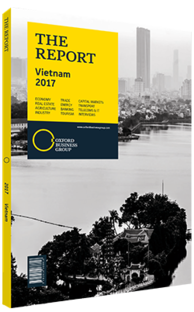Dao Dinh Thi, Chairman, BaoViet Holdings: Interview

Interview: Dao Dinh Thi
What segment will be the main driver of growth for the Vietnamese insurance sector in 2017?
DAO DINH THI: Insurance companies have been positively and actively capturing market opportunities, especially from the middle-class segment who generally have higher incomes and a better understanding of the importance of insurance. However, the lower-income segment is also a potentially essential target for insurance companies. Over the past 20 years, Vietnamese insurers have carried out a successful marketing campaign to increase life insurance penetration, but more efforts need to be made to broaden customer reach and improve people’s understandings of the importance of life insurance. More outreach with the middle and less affluent classes should be a priority. Urban residents across Vietnam understand the benefits of having insurance coverage, but most residents of rural communities are not yet well informed enough about the products and their advantages. Consequently, insurance companies should develop a wider variety of products and the flexibility to fully cover the demand of the lower-income segment.
How can penetration levels in the life insurance segment be increased?
THI: The positive results in Vietnamese insurance markets from 2015 indicate that Vietnamese people are becoming more interested in insurance products, and interest in life insurance remains significantly higher. The penetration rate for Vietnamese life insurance products remains relatively low, accounting for less than 2% of GDP compared to the rate of 3.5% of GDP amongst ASEAN countries, 5.37% in Asia more generally and 6.3% of GDP worldwide.
Meanwhile, the rate of penetration in the Vietnamese life insurance market is approximately 1%, which clearly reflects great potential for the life insurance segment. Each player needs to broaden its network to reach such a large customer segment. In parallel, the aim is to develop optimal insurance products in order to meet increasing and diverse customer demands. The process needs to be supported by strong marketing and education efforts. Research and development should also start taking into account the diversity of customers, which is understandable for a relatively new industry in Vietnam, and agents will remain the primary distribution channel in Vietnam.
The main products for insurers to consider are anticipated endowment and universal life with diverse, utilised supplementary products focusing on increasing customer demand in health care and comprehensive financial protection. In the future, more products will be developed in the life insurance segment, such as voluntary pension products, which will help the industry grow into the corporate sector.
How are insurers tailoring their strategies to attract the country’s growing middle class?
THI: In both the life and non-life segments, momentum is primarily driven by upgrades of service and the development of distribution channels in order to improve the ability to reach new customers. We also need a better and stronger standard of customer care, as one of the most important factors for growth in the industry is consumer confidence.
Vietnamese insurance companies need to thoroughly understand the demand of this customer segment, and to implement relevant strategies on products and distribution channels. Specifically, the diversification of distribution channels should be promoted simultaneously with strengthening IT implementation. The middle-class segment contains many individuals interested in IT and who are interested in financial service products. Therefore, insurance companies should consider strategies for developing new distribution channels, including potential bancassurance channels which can roll out with the support of digital IT in order to reach this customer segment.
You have reached the limit of premium articles you can view for free.
Choose from the options below to purchase print or digital editions of our Reports. You can also purchase a website subscription giving you unlimited access to all of our Reports online for 12 months.
If you have already purchased this Report or have a website subscription, please login to continue.

